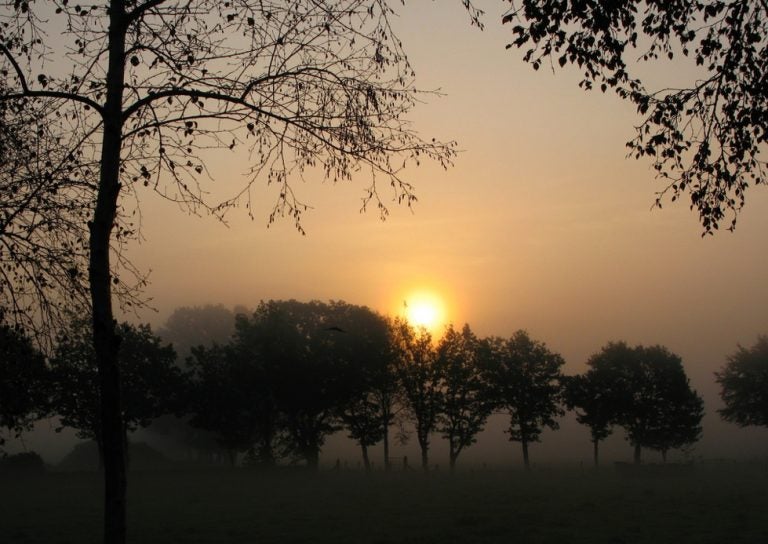The science behind the many colors of fall
Listen
Fall foliage in New England. (Kimberly Vardeman/Flickr)
It’s hard not to admire the transition into fall’s fiery foliage, particularly in the northeast part of the country. Leaves, however, do not change color for entertainment value. They do it for brutal frugality.
“Leaves change color because trees kill them,” explains Paul Hetzler, a Horticultural and Natural Resources Educator, in an interview with the Pulse. “[Trees] shut down the sugar factory for the season, all based on their energy budget.”
According to Hetzler, as the weather turns cooler, deciduous trees begin to create a waxy layer between the leaf stem and the twig. This prevents any stored nutrients or moisture from reaching the leaves. The pigment that gives leaves their green color, chlorophyll, is the first to fade away. No chlorophyll, no more expensive sugar production.
Luckily for us, a leaf’s death is a slow death. With the help of adequate moisture and long sunny days, other pigments demonstrate greater resilience than chlorophyll. These pigments, known as the carotenoids, are the yellow and orange hues seen in the fall. The carotenoids have always been there, just dominated by chlorophyll.
Curiously, not all leaf colors are hidden behind a layer of green. Other trees produce complex and large red pigments, anthocyanin. Why waste energy on synthesizing red colors for a dying leaf? Hetzler says that there are three theories circulating the horticultural circuit: the red could possibly act as a herbivore deterrent, a natural “sunscreen,” or as an edge for interspecies competition.
These theories all have their faults, and Hetzler has his doubts, but that does not dampen his spirits.
“All in all science doesn’t know. I think these mysteries are kind of fun and I love to admit that we don’t know,” Hetzler confesses.

In this leaf, the veins are still green while the other tissue is turning red. (Nickel Eisen/Flickr)
WHYY is your source for fact-based, in-depth journalism and information. As a nonprofit organization, we rely on financial support from readers like you. Please give today.



